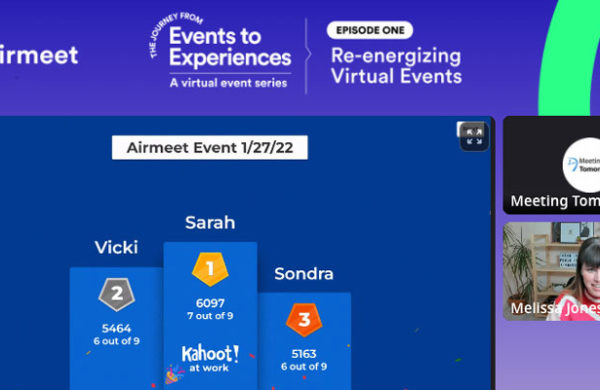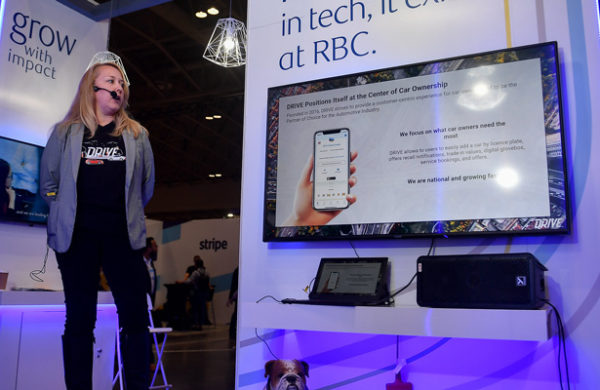
There’s a lot that goes into a successful corporate event. The time, planning, space, and money required to have an event that actually builds corporate culture or converts potential clients are all immense. That’s why it’s critical to make sure your hard work is worth it in the end – you have to know whether your corporate event was a success or not.
However, gauging the impact of a corporate event can be difficult since it depends on the type, location, attendees, and the other details. Some very small events, for example, are easy to judge just by the looks on attendees’ faces. Larger events, on the other hand, require some thorough follow-up to gauge the ROI and attendee satisfaction.
If you find yourself facing the challenge of judging an event’s impact on your bottom line, you’re not alone. But measuring success doesn’t have to be a major obstacle with these basic assessment tricks.
List the event goals
Before you can get an accurate assessment of the event’s success, you need to know how to actually define that success. Different corporate events have different purposes. Is the goal of your event to acquire new leads? Boost revenue? Create new business opportunities? Once you identify the purpose of your event, you can then establish goals and key performance indicators (KPIs) to help you define your success.
Simple events for employees and clients are typically all about improving intangible things like company culture, customer satisfaction, and employee happiness. If people are having a good time during the event, that can sometimes be enough to call it a success.
Events focused on client outreach and acquisition, especially in B2B settings, often have more tangible milestones of success. This makes them easier to track, so long as you know how to capture the right data.
For instance, the following are just a few common event goals and the essential types of data that event marketers will track:
Capture New Leads — Lead capture software is a worthy investment for event managers. There are now services which allow you to easily capture leads’ by scanning a QR code from the attendee’s badge using your phone. Just remember to test out the service in advance of your big event.
Increase Revenue — If you’re hosting a fundraising event, you’ll want to know how much you actually raised. To measure this, simply subtract the total cost of the event (including things such as time, labor, food, custom promotional products, venue, etc.) from the total revenue.
Create New Opportunities — How much does it cost you to acquire a new customer? Use this as a benchmark to compare how your new prospects obtained from your event stack up against your current customers. Hopefully, you’ll come away from the event with more valuable prospects.
Whatever your goals are, list them out and be as specific as possible so you will know if the event achieves your goals.
Attendance Metrics
One of the simplest measurements of success is the number of attendees to the event. The common logic is straightforward: the more people you have, the better. While this way of thinking does not always apply to every corporate event, it is a good starting point for judging success.
When measuring attendance, be sure to track the check-in rates to calculate your expected attendee numbers. Unless the event has an open invitation, you will likely have a guest list or employee manifest. At the very least, the size of the space and event preparations will have an assumed guest count. If the check-in rate is close to the expected attendee numbers, your pre-event marketing efforts were likely successful. Unfortunately, these numbers by themselves won’t tell you how successful the event itself is.
If your organization is holding an annual event, you should also consider measuring unique and repeat attendees. How many attendees at this year’s event came to your previous event? This data can be used as a benchmark for next year and help you estimate the number of attendees at your next event.
Social Media Metrics
A good success indicator before and during the event are the basic numbers on any social media post or account: the number of likes, comments, retweets, etc. If social media is a part of your pre-event marketing plan, you can track how people engage with this content ahead of time.
For instance, tracking impressions, reach, video views and the number of social mentions with your event hashtag can help you measure the effects of your pre-event marketing efforts. Similarly, by measuring the number of likes, comments and tweet replies to your event, you can get a rough idea of expected attendance rates. If your target audience is largely ignoring these posts and messages, the attendance rate may be lower than expected.
Also, don’t forget to track social conversions and the cost per acquisition for each social channel. How many tickets did you sell as a result of your social media marketing efforts and how much did it cost to convert your customers from each channel? Gathering this data will also help you make smarter use of your marketing budget for your next event.
During the event, see if attendees are bringing their social media presence into the experience. Selfies, party photos with people and giveaways, check-ins, and status updates are common ways guests may share their experience with the digital world. If you want to encourage people to post about their experiences, use a simple hashtag for the event. Afterwards, this will allow you to see how many people actually used the hashtag and what they posted online.
Guest Satisfaction
The most direct way to gauge the success of your corporate event is by measuring attendee satisfaction. Getting a feel for the pulse of the event, the emotional experience it offers guests, will let you know if the atmosphere, activities, food and other specific details of the event were effective. You will get an idea of what worked, what didn’t and how to plan accordingly in the future.
The simplest way to do this is to actually go around and talk with guests. Ask them about their experience. Are they enjoying themselves? Do they have any complaints? Are they taking any promotional gifts or buying promotional products? Write down their feedback so you will have a whole collection of responses to analyze later.
A quick survey can also be helpful in gathering this type of feedback. Use a few scale questions like, “From 1-10: How much did you enjoy the event?” These questions are quick for attendees and allow you to combine surveys to get an average response for each question.
You can present the survey either during or after the event. If you have a guest list with contact information such as email addresses, send the survey a day or so after the event so attendees have time to reflect on their experience.
The Bottom Line
There are many ways to determine the success of a corporate event. Beyond increased client conversions and sales numbers, look for the intangible effects as well. Are employees happier? Is the everyday office experience better? Is there a greater sense of culture or community? Gauging the success of a corporate event is all about understanding its effects on your business.



